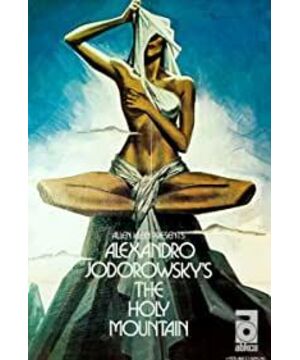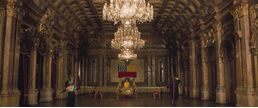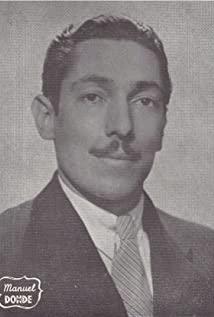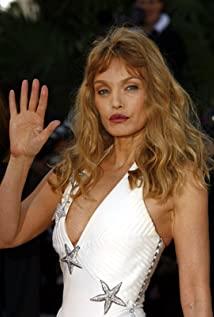About Postmodernism - Introduction
I found two paragraphs with their characteristic descriptions, but first we have to make it clear that we are talking about a deconstructed and futuristic thing, so it must be very different from the current mainstream humanistic thinking and worldview. The description of postmodern philosophy, political capital, and thinking is very extensive, and there are many categories that need to be understood, from the form of humanism to anti-humanism, utopia, dystopia, political, social, and very complicated. There is no definite philosophical form to which it ultimately refers. To quote David Ray Griffin: If the term postmodernism can be used in different ways to find common ground, that is, it refers to It is a broad emotion, not a common dogma—that is, one that believes that human beings can and must transcend modern times. "In this way, the philosophical theories with this anti-traditional theoretical tendency in different periods can all be attributed to postmodernism, such as poststructuralism, Western Marxism...
Back to art, post-modern art in the 1960s was almost deconstructed, it was constantly blurring the line between art and non-art. They preached that art was dead. In my opinion, art has become an eternal existence. This death is in some After blurring, enumerating: eg the contemporary world has accomplished egalitarianism ie the vocabulary concepts of men and women have been blurred, the education of man from early childhood has changed people and put aside the humanistic ideas of men and women. Then men and women are dead, and new human beings and new cognitions emerge. We can now describe this as a result of postmodernism. Fuzzy art is the same as non-art, so we say that postmodernism is a transformation of modernism, a deconstruction of a broad mood, a mood beyond modernity, and this is the basic element.
The existence of any post-modernist artwork is critical, not as literal and secular think it is, then this is the prelude, the most basic must-have.
Source: 1 Transformation of Modernist Aesthetics——
In the field of aesthetics, postmodernist features tend to address certain issues of modernist aesthetics. According to John Hill (1998, P99), the expression of modernist aesthetics is mainly faced with two problems. On the one hand, it is heading for the failure of exhaustion; Communication, the aesthetic expression of modernism is gradually losing the attention and support of the mass market. Faced with these problems, the aesthetic expression of film shows three changing characteristics in the postmodern era: First, it shows a keen attitude to the taste and popular culture of the public, and dilutes the boundary between high-end taste and popular culture to reveal elegance. The hypocrisy of art; the second, showing traces of eclecticism on the basis of enthusiasm, not rejecting (or even encouraging) the mixing of different styles of genres, artistic techniques to form stylistic hybrids or emphasizing juxtapositions, collages and The strategy of appropriation; thirdly, in response to the cultural depletion of modernism, the postmodern expression of the film tends to dilute the emphasis on the originality of literature and art, and instead creates opportunities for parody and collage to seek the novelty of the original text.
—————————
For me, post-modern aesthetics is, first of all, a kind of deconstruction of emotions, with objective visual perception and corresponding to modernism’s resistance to rationality. With an ego look ahead.
About Contemporary: I personally reject it emotionally. Contemporary China and the world are too sad for me. Although there are also many inspiring contemporary works, contemporary is also necessary, but I prefer to focus on the emotions that go beyond modern times. The exhaustion of contemporary thinking is also obvious. The conventional attitude of capital entering the art market is by no means contemporary. On the one hand, I think contemporary art is the product of the passing of time and history, excessive bubbles, in Impressionism, Post-Impressionism, Dada, and abstract art are all a continuation of stability and vitality, because of the changes in living materials in the early 1990s Contemporary art -In my opinion, 2017 was too chaotic, eager, immature, experimental, too rational, and cited concepts that were too ups and downs, all kinds of things. But contemporary art as a time limit and now critical joke strikes me the most, Ai Weiwei, Chen Danqing, etc.
Source: 2 Fighting Rationality
The struggle against rationality is the core issue of postmodern aesthetic experience, and the specific struggle behavior is reflected in different levels. First of all, in order to resist the restraint of reason, postmodern aesthetics tend to indulge in some form of "pre-rational spontaneity" (Bell, Wang Yuechuan, p137), so pornography, drugs and violence---these "people" as biological The authentic impulse of the body has become a part of the postmodern film aesthetic experience. The impact of these primitive irrational inner impulses on the modern rational life experience is excellent. Of course, this also includes self-reflection and reflection on the movie characters. This catharsis of the id helps to break through the barriers of rational thinking and guide the audience to restore the authenticity of themselves. Secondly, postmodern aesthetics is anti-interpretation (Sontag, Wang P137) thinks that interpretation is the revenge of intelligence on art, and Bell also believes that postmodern aesthetics should question "criticism" and make criticism fall into a state of unreliable "criticism". embarrassing situation. Therefore, open text structures and obscure aesthetic expressions often run through postmodern films to reject the audience's rational speculative tendencies and guide their individual aesthetic experience activities. Finally, postmodern aesthetics is emphasized as a return to visual aesthetics. The formation of this concept is, on the one hand, the result of postmodern philosophy's opposition to the rationality and structure of modern texts, and on the other hand, it is also related to the proliferation of images caused by emerging media technology. Returning to "vision" means that the whole society has returned to a perceptual aesthetic consciousness, life has become more flat, and the depth of reason and the norms of structure gradually fade out of people's consciousness. In the postmodern society, the film "pays more attention to the visual impact and dizziness" (Wang Yuechuan, P136), the sensory stimulation brought to the audience, and the background visual perception of the film is also more delicate, bizarre or contrasting
postmodern aesthetic
I have to mention the individual aesthetic experience. The literary works of the Beat Generation have all kinds of essential impulses, breaking through the staleness of social norms, extremely personal words, sharp poetry, and blues-style madness. For me, literature has given me a sexual aesthetic. Experience, some people may feel that their things are like the dirt in the sewer is too exposed, the vocabulary is too crazy, but this stimulation undoubtedly has a new literary experience for people, however, art returns to perceptual aesthetic awareness, back to vision Aesthetics is not so simple. Sado Rowski is a very good example. The visual shock of the holy mountain is still warm to me and the plot will not give you reason for rational speculation. Deconstruction, deconstruction, and reorganization of the world, In Sado's movies, you can't guess what will happen in the next second. Aesthetics, oh no, it's not a single beauty, but a real beauty of perceptual awareness. Postmodern is fundamentally very rebellious. A lot of introspection, a very huge knowledge system, I hope more people can understand it, a kind of innate human instinct. Read more books and dance less.
View more about The Holy Mountain reviews











